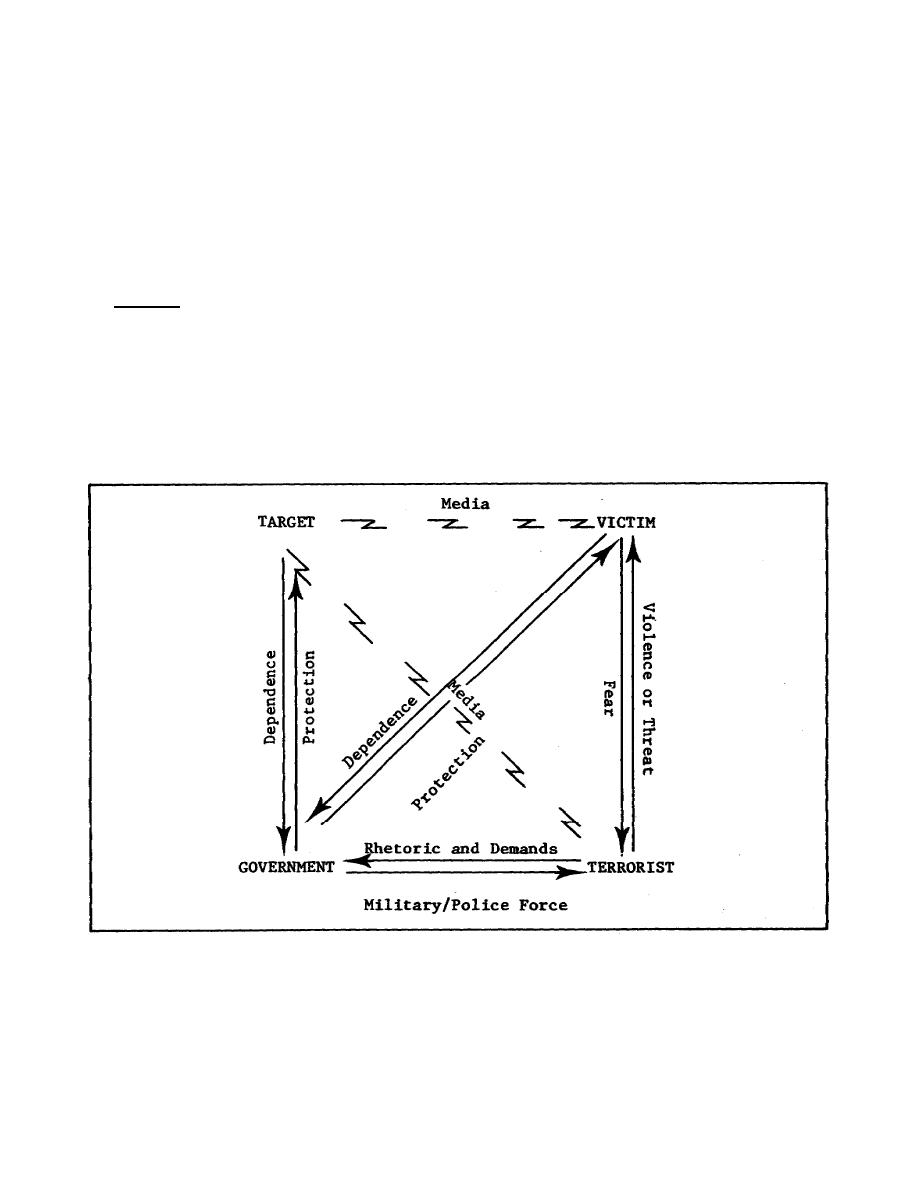
The common strategy of the terrorist is to commit acts of violence which will draw the attention of the
world to the cause. The victim is seldom his target. By threatening or carrying out acts of extreme
violence against a victim, the terrorist is attempting to produce fear in the victim and the target; both of
which are dependent upon the government for protection.
At the same time, the terrorist makes demands upon the government, which in turn, must have some
reaction to the terrorist, target, and victim. Figure 3-1 illustrates the relationship in a terrorist situation.
PART C: DESCRIBE COMMON TACTICS USED BY TERRORISTS
1.
Bombing.
The tactic most common to terrorist groups is bombing. Of all terrorist incidents recorded over the last
decade, a little over 50 percent were attributed to the terrorist bomb. The bomb is a popular weapon. It
is cheap to produce, easy to make, has variable uses, and is difficult to detect and trace after the event.
The increase in bombing activity and the increase in sophistication of devices used has caused the
NATO Explosive Ordinance Disposal Standardization Committee (EOD) to classify all terrorist bombs
as Improvised Explosive Devices (IEDs). This makes them distinct from all others. The term IED is
now commonly used by many law enforcement agencies as well as military forces.
Figure 3-1. Relationship in Terrorist Situation
3-5
MP2001



 Previous Page
Previous Page
